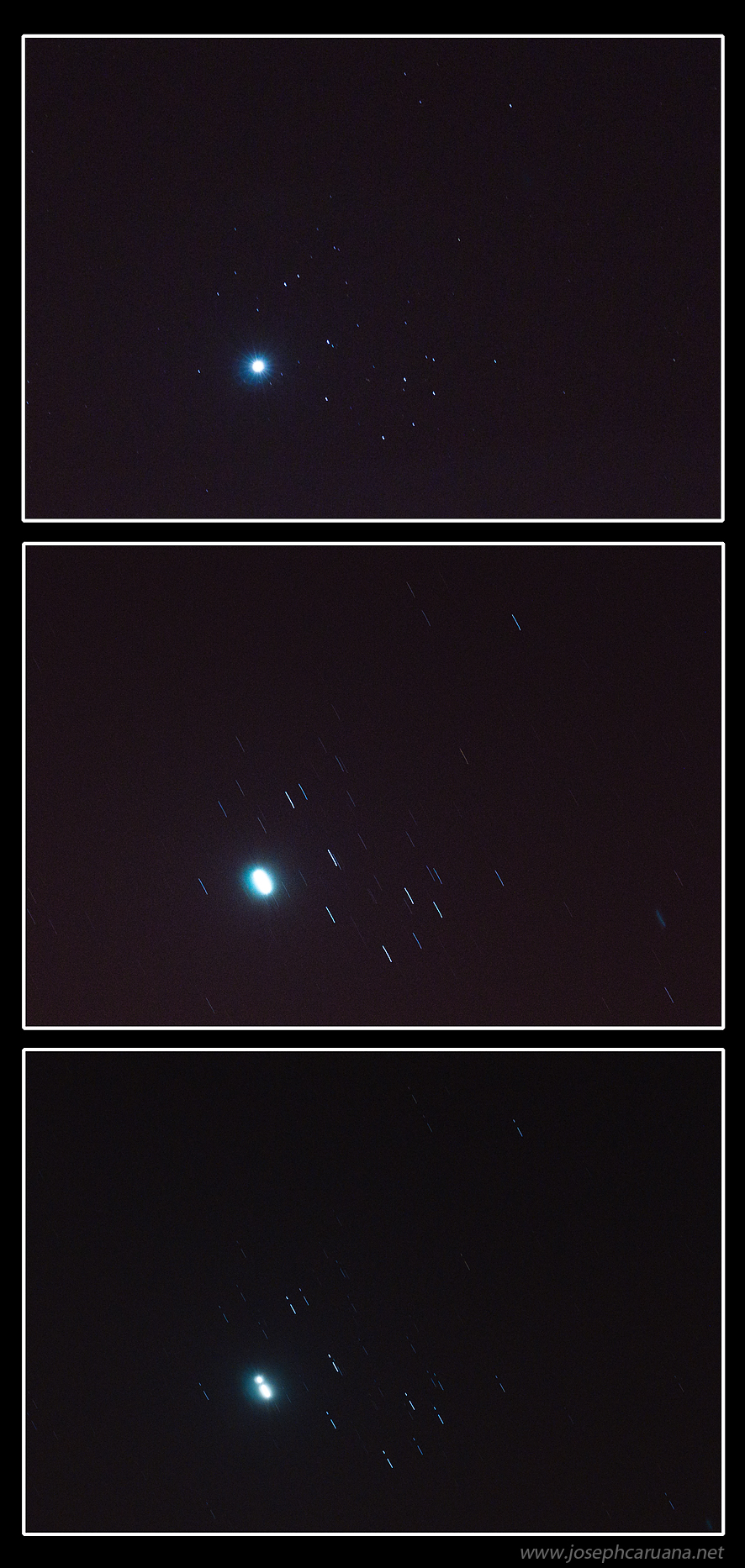Venus and the Pleiades
Anyone who looks up at the evening sky over the coming days will see a bright gem shining brilliantly in the West. But this is no star. It’s actually the planet Venus (aptly known as the “Evening Star” or the “Star of the West”) which is currently dazzling us every evening as its dense atmosphere reflects back light from the sun. But this evening was even more special as Venus moved across the open star cluster commonly known as the Pleiades. It was an event that reminded me of the brilliant show of 2005, when comet Machholz passed near the same star cluster. I clearly remember using my 8-inch Schmidt Cassegrain telescope to observe what looked like a dim fuzzball slowly making its way past the brilliant Seven Sisters, another common name for the Pleiades.
The pictures below show the planet Venus (the very bright object in each frame) together with stars of the Pleiades. The photos were taken with a Nikkor 70-200mm f/2.8 lens (@ 200mm) attached to Nikon D300 body. The first picture is a fairly short exposure of 8 seconds @ f/5.6 and ISO 800, and you can see that the stars (and Venus, of course) already show some trailing (i.e. they are not exactly pin-points of light). This is due to the motion of the Earth upon its axis; as the Earth turns around, objects in the sky appear to move – and since I was not compensating for this shift throughout the exposure, Venus and the stars appear smeared. (The actual light-recording time for this frame was more like 4 seconds since I placed a black cardboard in front of the lens for the first 4 seconds of the exposure until camera vibrations had died down.)
This trailing effect is much more obvious in the second picture in the series, which is a much longer exposure (30 seconds @ f/8 ISO 800). For the third picture (which saw the camera shutter remaining open for 30 seconds @ f/8 ISO 400) I first allowed light to be recorded by my camera for something like 4 seconds, then covered the lens with a piece of black cardboard for a few seconds, and then removed it again for the remainder of the exposure to record some trailing. This resulted in a short trail separated by a longer trail. This was done purely for effect.
I hope you enjoy the pictures, and if the skies are clear tomorrow evening, do point a pair of binoculars at Venus; whilst it won’t be in the midst of the Pleiades, the beautiful star cluster will be located towards the lower right of the planet. I wish you happy observing!

